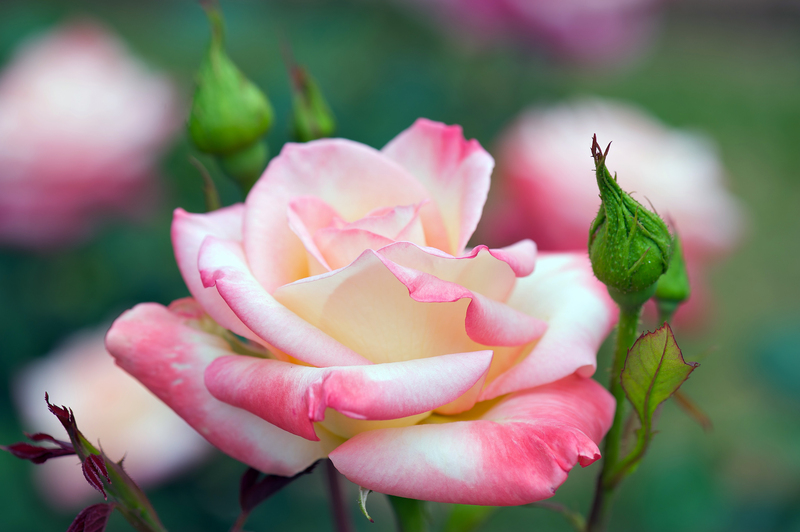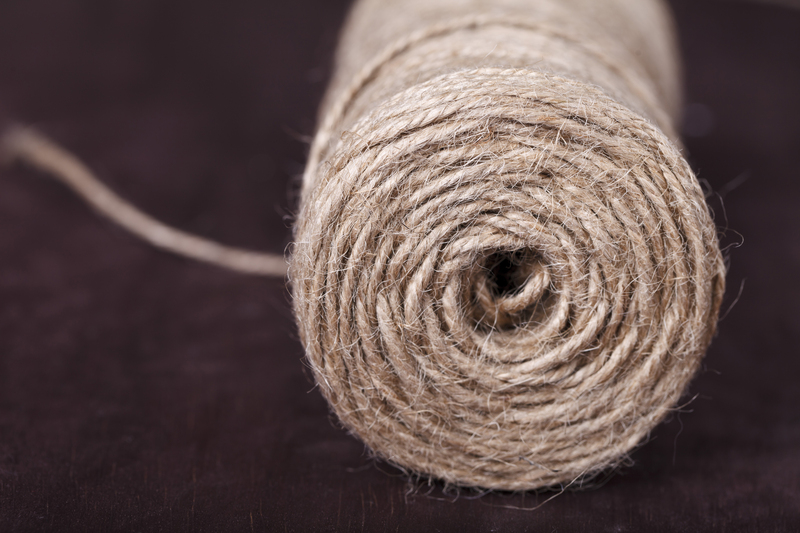Enriching Garden Environments for Dogs and Plants
Posted on 02/10/2025
Enriching Garden Environments for Dogs and Plants
Creating a garden that is both a haven for your beloved pets and a flourishing sanctuary for plants can be a truly rewarding endeavor. If you're eager to share your green space with your canine companion while promoting vibrant plant life, this comprehensive guide to fostering an enriching garden environment for dogs and plants will equip you with practical ideas, inspiration, and actionable tips.
Why Design a Pet-Friendly and Plant-Rich Garden?
Your garden is more than a patch of green: it's a sensory wonderland for your dog and a thriving home for a diverse range of plants. Dogs relish the sights, smells, and textures gardens offer, and plants, in turn, benefit when the ecosystem is balanced and safe. By prioritizing both, you create an outdoor space that's sustainable, appealing, and safe for all its inhabitants.
- Dogs experience enrichment through exploration, scent, and play.
- Plants flourish with proper soil, sun, and protection from energetic pets.
- Humans benefit from a beautiful, stress-relieving environment.

Key Considerations for Enriching Garden Spaces for Dogs and Plants
1. Safety First: Dog-Friendly Plants and Secure Boundaries
When cultivating an enriching garden for dogs and flora, always start with safety. Some common garden plants can be harmful to pets. It's essential to choose non-toxic, pet-friendly plants and establish secure boundaries.
- Fencing: Install robust, escape-proof fencing. Ensure there are no gaps or sharp edges. For diggers, consider burying the fence base.
- Plant Choice: Avoid toxic species such as azaleas, oleander, foxglove, lilies, sago palm, and certain mushrooms.
- Safe Alternatives: Choose calendula, sunflowers, marigolds, rosemary, basil, and strawberries, which are generally safe for dogs and beneficial in gardens.
- Mulch: Avoid cocoa mulch, which can be toxic. Opt for pine or cedar-based mulch instead.
2. Creating Zones: Spaces for Play, Rest, and Nature
To truly enrich your outdoor environment for pets and plants, design your garden with defined zones that reflect the needs of both.
-
Active Play Area
- Use tough, dog-friendly lawns such as buffalo or Bermuda grass for football and fetch.
- Install agility equipment, like tunnels and hurdles.
- Leave a designated "zoomie zone" for energetic running.
-
Shady Resting Spot
- Incorporate trees or dog-safe structures to provide shade.
- Consider a raised dog bed to keep pets cool and comfortable.
-
Peaceful Plant Sanctuary
- Install low fences or raised beds to protect delicate plants.
- Group more fragile plants out of traffic zones.
3. Sensory Stimulation: Smells, Textures, and Tastes
Dogs and plants both thrive in gardens rich in sensory experiences. Stimulate your pup's senses and boost biodiversity for your flora.
-
Scent Gardens:
- Plant dog- and bee-friendly herbs (lavender, mint, thyme, chamomile) for aromatic exploration.
- Include plants with different scents to engage your dog's powerful nose.
-
Textural Paths:
- Use lawn, gravel, bark, and stepping stones for varied underfoot sensations.
- Add smooth rocks or logs for climbing and jumping.
-
Edible Options:
- Grow strawberries, basil, blueberries, carrots, and snap peas--snacks for both dog and owner.
Design Tips for a Balanced Dog-Friendly and Plant-Filled Garden
Enhancing Your Space with Smart Planting Strategies
Smart planting design helps you enjoy a lush, beautiful garden even with a dog in residence. Strike the right balance by planning your garden layout thoughtfully.
- Raised Beds protect plant roots and keeps energetic paws at bay.
- Sturdy, dog-proof plants like ornamental grasses, lavender, and boxwood can handle curious noses.
- Buffer Borders--using rocks or driftwood--discourage dogs from trampling sensitive areas.
- Pathways direct canine traffic, keeping pets off delicate flower beds.
Water Features: Enriching and Cooling
A water feature enriches the garden for both dogs and plants. Bubbling fountains or small dog pools provide entertainment, hydration, and cooling relief. Just be sure your water feature is shallow, easy to clean, and safe for all garden creatures.
Natural Pest Control and Non-Toxic Care
- Organic pest management: Use natural deterrents and companion planting rather than chemical pesticides.
- Pet-safe fertilizers: Avoid synthetic chemicals. Compost and seaweed-based fertilizers are safer for pets and pollinators.
Enrichment Activities and Garden Games for Dogs
You can turn your garden into an engaging adventure playground for your dog while keeping plant life thriving. Here are some garden enrichment ideas that benefit both dogs and plants:
- Sniffari Trails: Scatter treats along garden paths or scent trails among shrubs and raised beds.
- Digging Pit: Set aside a sand or mulch area where dogs are encouraged to dig, protecting your flowerbeds.
- Tug-of-War Posts: Install sturdy poles for toy rope tugging.
- Interactive Planting: Plant herbs or veggies you and your dog can harvest and enjoy together.
- Puzzle Feeders and Toys: Hide food or toys safely among robust plants to inspire foraging instincts.
Dog Health and Garden Well-Being
Eco-Friendly, Low-Allergen Plant Choices
Dogs--like people--can be sensitive to pollen or plant irritants. Choose low-allergen, non-irritant plant varieties wherever possible, and keep up with regular garden maintenance to minimize risks.
Safe Storage and Cleanliness
- Store garden tools and fertilizers in locked areas.
- Promptly remove broken branches, old toys, and waste to keep the garden clean for both plants and pets.
- Regularly check for ticks, slugs, and other pests that may affect dogs or plants.
Sustainable Practices for the Ultimate Dog and Plant-Friendly Retreat
Sustainability enriches dog and plant environments naturally. Use recycled materials for garden features and mulch with lawn cuttings, bark, or leaves. Collect rainwater for irrigation--dogs love to splash in barrels! Encourage pollinators by planting wildflowers and minimize lawn chemicals for a healthier, balanced ecosystem.
Companion Planting and Biodiversity
Companion planting means growing certain plants next to each other for mutual benefit, maximizing plant health with less reliance on chemicals. Basil and tomatoes make great companions, as do marigolds and many vegetables. More insects and birds means a richer sensory world for your dogs too!
Climate Considerations
- Select plants suitable to your local climate: drought-tolerant succulents or ferns for shady spots.
- Create microclimates with shade canopies or hedges to help plants and dogs cope with summer heat.
- Mulch well to retain soil moisture and keep paws cool.
Common Mistakes to Avoid in Dog-Plant Gardens
- Overusing Chemicals: Even tiny traces can harm pets and wildlife. Use natural alternatives wherever possible.
- Ignoring Plant Toxicity: Always check new plant species using online or vet resources.
- Assuming "Dog-Proof" Means "Maintenance-Free": Dog-friendly does not mean indestructible; regular repair and planting is normal.
- Not Adapting Over Time: Dogs age and gardens mature. Tweak layouts and plant types as needed.
Bringing It All Together: Sample Dog-Friendly, Plant-Enriching Garden Layout
To help visualize your enriching environment for pets and plants, here's a sample layout:
- Central lawn area--hardy grass for play.
- Raised vegetable beds--fenced for protection.
- Aromatic herb border--lavender, rosemary, mint.
- Shaded bench under a tree--for you and your resting pup.
- Water feature--bubbling fountain or small dog pool.
- Dig pit--mulch-filled for digging fun.
- Wildflower patch--for pollinators and exploration.
- Defined stone paths--guiding movement and protecting plants.

Frequently Asked Questions About Enriching Outdoor Spaces for Dogs and Plants
What are the best plants to grow in dog-friendly gardens?
The best plant choices for dog-friendly gardens include marigolds, sunflowers, nasturtiums, calendula, rosemary, thyme, lavender, basil, and grass varieties such as buffalo and ryegrass.
How can I stop my dog from destroying plants?
Train your dog by providing alternative activities (dig pits, toys) and use physical barriers like raised beds, fencing, or rocks around sensitive plants. Consistent redirection and positive reinforcement help greatly.
Is mulch safe for dogs?
Never use cocoa mulch, as it's toxic to dogs. Safer alternatives include pine, cedar, or shredded bark.
How can I add enrichment for my dog without disturbing garden plants?
Create dedicated paths and activity zones, use robust border plants, and offer sensory stimulation with scent gardens and interactive toys that don't disturb delicate beds.
Conclusion: A Garden for All
With thoughtful planning, you can cultivate an enriching garden environment for both dogs and plants--one that's alive with play, life, and relaxation. Whether you have a small courtyard or a sprawling backyard, balancing the needs of your furry friend and flourishing flora creates a truly rewarding outdoor retreat. Embrace organic practices, prioritize pet safety, and let your garden become a thriving, multi-species paradise.
For more tips on gardening with pets or to share your own dog-and-plant-friendly design, visit our resource section or join the conversation below!

